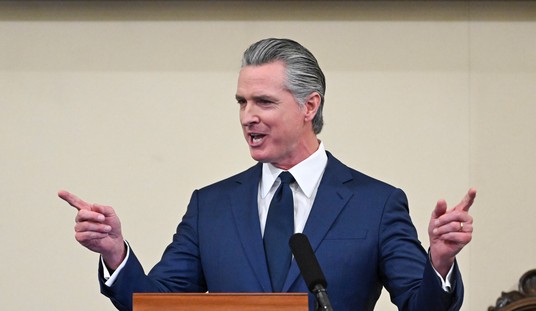According to a report in the Wall Street Journal, about 26 percent of the unemployed have not held a job in more than a year. Liberals point to these figures as proof that we need to extend unemployment benefits. In states with high unemployment rates, the unemployed are now entitled to up to 99 weeks of benefits through state and federal programs. But liberal policies may have actually created the problem rather than alleviated it.
There is no question that many people who lost their jobs during the worst of the recession have been unable to find work that paid as well. Nearly one in 10 workers today is unemployed, and the economy is creating jobs at a painfully slow rate. But there are jobs available -- and not just those offered at minimum wage -- that go unfilled every day.
Several studies show that about one-third of those receiving unemployment benefits get a job immediately after their eligibility expires. And a quick survey of help-wanted signs and classified ads in most areas suggest that businesses are looking for workers. In 2009, when the economy was in worse shape, 3 million jobs went begging, while 13 million Americans were unemployed.
The long-term unemployment rate now is actually higher than it was in the Great Depression. But does anyone truly believe that our economy is in worse shape than it was in 1933, when the unemployment rate was 25 percent?
Something else is at work -- and it appears that we're succumbing to the European pattern of unemployment. For decades, the U.S. has had lower unemployment rates, in good times and bad, than many European nations. In 2007, for example, the U.S. unemployment rate was 5 percent, compared to 7.9 percent in France and 8.4 percent in Germany.
But Europe has traditionally had a more generous safety net, including unemployment benefits, making it less attractive to Europeans who lost their jobs to accept other work that might entail moving or accepting lower wages. In some cases, Europeans who lost their jobs could expect to earn as much in government benefits as they did while working and to do so for at least a year. No wonder unemployment remained high in essentially good economies.
Recommended
We've not had that problem in the U.S. in the past. Historically, Americans have been willing to pick up and move when jobs disappeared, but American mobility is down to its lowest level in years. Many analysts thought that the reason might be that the depressed real estate market made it more difficult for homeowners who lost their jobs to move, but a recent study by economists Colleen Donovan and Calvin Schnure shows that the inability to sell houses that are below water has not had a major effect on the unemployment rate.
The real problem in long-term unemployment may be a president who wants to emulate the European social model. The more he succeeds in prolonging benefits, the greater the chance that long-term unemployment will remain high even when jobs are available. It's a fact of human nature that when benefits are generous, some people will find not working more attractive than working.
New Jersey, for example, has the highest number of long-term unemployed, 37 percent, but it also pays high unemployment benefits, averaging $394 a week, almost $100 a week more than the national average. If you can earn $20,000 a year for not working, what incentive is there to take a job that pays about the same or even slightly more? But chances are, when those benefits run out, you can bet a $25,000 or $30,000 a year job will look a lot better.
The Germans have a word for what the president and his allies in Congress may have done by extending unemployment benefits: schlimmbesserung. Roughly translated, the term means an effort to make things better that ends up making them worse.
As counterintuitive as it might seem, if we want to improve our unemployment numbers, the best thing to do would be to shorten eligibility.

























Join the conversation as a VIP Member